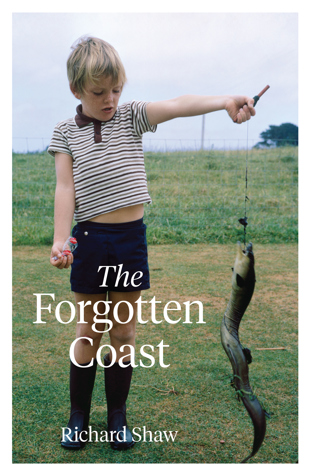Georgina White has reviewed Richard Shaw’s memoir, The Forgotten Coast for the New Zealand Journal of History:
‘This is an elegant, thought-provoking memoir. Richard Shaw weaves together stories of his father, his great-uncle and his great-grandfather, while reflecting on the silences: words unsaid, lost documents, details “left out, forgotten or unaccounted for” (p.19). This innovative approach raises questions relevant to the writing of all kinds of histories — how do we write history without archival evidence? What do we choose to tell and not to tell, and why? Can showing be more powerful than telling?
Shaw’s father, Bob, was a man of few words. When Bob was seven, his mother died from tuberculosis. Shortly after he contracted TB and diphtheria. He was admitted to Masterton hospital, where he stayed for two years. He received few visitors. Bob’s father found work on the Wellington wharves, remarried and began a second family. When nine-year-old Bob was discharged from hospital, he entered Masterton Methodist Children’s Home with six of his nine siblings. If this childhood was tough, Bob did not say. “Dad would quietly explain that the Home had been a home, that the forty or so kids there had been a family, and that, no, to the best of his knowledge there had been no abuse. You wouldn’t press him” (p.170). Shaw recalls what his father says, and the conversations he wishes they had had. This brings to his mind the silent ways his father expressed his love for his children. At the very end of his life, his father kept in his dressing gown pocket a cutting of an article by Shaw. “By the time I figured out that there are ways of being intimate that do not require torrents of words, it was too late,” Shaw writes (p.185). This text is personal and moving.
Shaw’s great-uncle Richard (Dick) Gilhooly was also a man of few words — or rather, words he penned cannot be found. At 20, he left the Holy Cross Seminary in Mosgiel and entered the Pontifical Lateran University in Rome. By 22, he had completed three degrees, including the Doctor of Divinity (normally a four-year programme), and was ordained a priest. With details from Sacred Heart College yearbooks, Shaw describes Dick’s academic and sporting achievements. With letters from various Catholic archives, Shaw chronicles Dick’s journey from Auckland to Mosgiel to Rome (a journey steered by several Catholic heavyweights, including Archbishop Thomas O’Shea and the Right Reverend Dr Father Arthur J. McRae).
Drawing from correspondence with McRae, Shaw describes Dick’s swift academic progress and the mental exertion, which would ultimately exhaust him. As Shaw acknowledges, missing from this correspondence are Dick’s first impressions of Rome and personal accounts of university life: “It must have been a time of tumult and excitement for him, but it remains frustratingly out of reach” (p.121). Equally frustrating (for both Shaw and this reader) is the loss of Dick’s thesis “on the essence and intrinsic evil of a lie” (p.137). Shaw reflects on the gaps in the archive, but refrains from speculating about what Dick may have said or felt. This restraint leaves room for the reader’s imagination and gives weight to those few moments when emotions are expressed — for instance, when Dick’s mother, Kate, writes to Father McRae about her youngest son’s imminent return to New Zealand. It is “such unexpected news”, “we are all delighted” but “feel anxious to know a little information” (p.151). Kate had not yet been informed that her son was dying of TB.
If Shaw’s story of his father is about the silences in a relationship, and his story of his great-uncle Dick is about the silences of archives, his story about his great-grandfather is, in part, about the act of silencing — or avoiding — the past. “For many years it was a choice to forget (or at the very least not to engage with, which amounts to the same thing) Parihaka and its aftermath, one which meant I could avoid dealing with my origins on the Coast” (p.45). Shaw’s great-grandfather, Andrew Gilhooly, was one of the 1589 men who invaded Parihaka in November 1881. A member of the Armed Constabulary No.3 Company stationed at Parihaka until 1885, it is probable he also participated in “the destruction of the pā and its cultivations” (p.21). Later, Andrew farmed in Taranaki on land confiscated from Māori. “In this country you can no longer simply put statements like these quietly aside (although that is exactly what I have done for the better part of fifty years)”, Shaw writes (p.21). His challenge, he says (inspired by the work of historian Rachel Buchanan), is to confront his ignorance; to tell truths “that need to be told” — in many ways, this book is the outcome of that challenge (p.46).
It is provocative. Reading The Forgotten Coast, I discovered that No.3 Company was under the command of Major Forster Goring, husband to Bertha Goring in whom I am interested. When the Gorings retired to Hawke’s Bay, Bertha wrote on the virtues of simple Christian living for Havelock North journal The Forerunner. The impact of Shaw’s book means I can no longer write about Bertha without also referencing her husband’s role in “one of the defining episodes in the violent enforcement of colonial rule in Aotearoa” (p.15). Not to do so is simply avoidance.’


